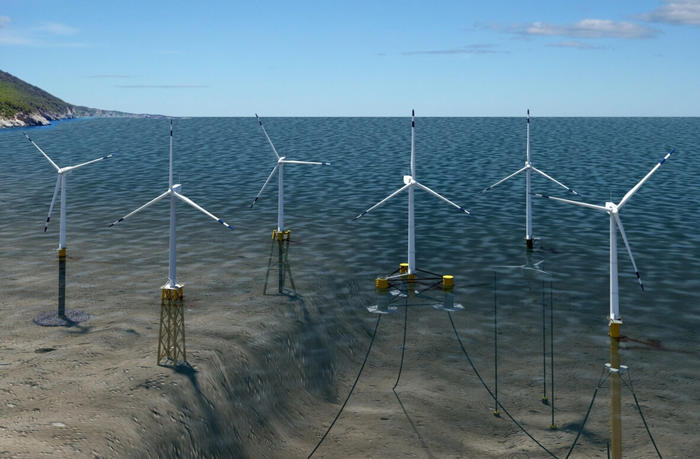Icon: enlarge
Photo: Bernd Wüstneck / dpa
The wind power plants in the North Sea delivered more electricity than ever before.
Overall, the amount produced rose by 12.4 percent compared to 2019 to 22.76 terawatt hours (TWh), as the network operator Tennet announced.
In addition, there was 4.13 TWh from the Baltic Sea, which remained practically unchanged compared to 2019, but which do not belong to the Tennet supply area.
In total, German offshore wind power plants produced almost 26.9 TWh of electricity in 2020, compared with 24.38 TWh in the previous year.
Offshore thus contributes a good 20 percent to the total wind power production in Germany of a good 132 TWh.
With the entire wind power, almost 34 million households could be supplied, with offshore wind power plants almost seven million households.
On average over a year, according to information from the industry, offshore wind power plants can utilize around 60 percent of their output;
the rest is lost through lulls, curtailments, and downtime for maintenance and repairs.
This yield could increase in the medium term, for example through technological progress such as hydrogen production.
Under the current conditions, offshore wind energy will replace around four conventional large-scale power plants.
There should be a wind energy distribution cross by 2035
Tennet's capacities for transporting the North Sea electricity to the mainland are, at 7132 megawatts, significantly higher than production.
The federal government's target of 6,500 megawatts for 2020 has thus been exceeded.
The federal government has set a target of 20,000 megawatts by 2030.
"The North Sea will be the new powerhouse of Northwest Europe," said Tennet Managing Director Tim Meyerjürgens.
Tennet will increase its offshore capacities to around 17,000 megawatts by 2030.
Including the planned expansion in the Dutch offshore grid, this means investments of 20 billion euros.
In addition, Tennet wants to build a first cross-border wind energy distribution hub in the North Sea with a capacity of twelve large power plants by 2035, through which Denmark, the Netherlands and Germany will be supplied with wind power from the North Sea.
Icon: The mirror
hej / dpa














/cloudfront-eu-central-1.images.arcpublishing.com/prisa/H7U7FJNUZBG6BPL5PZCMGC6EUY.jpg)